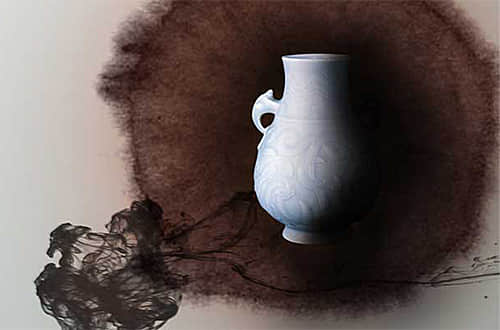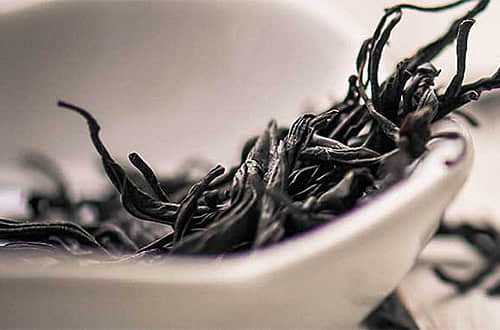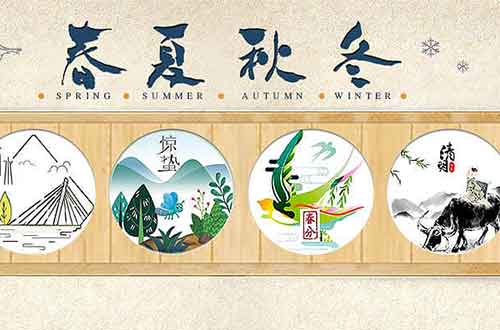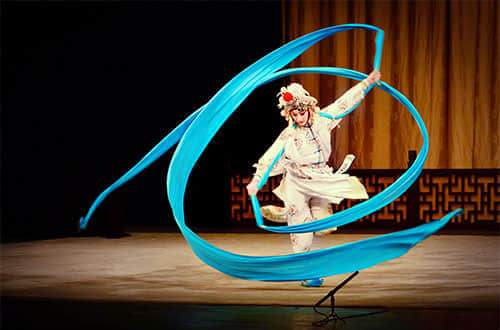The History of Kungfu

Jean Joseph Marie Amiot -a French Jesuit missionary stationed in Beijing during the reign of the Qianlong Emperor of the Qing dynasty-, was the first Westerner to ever use the term ‘Kung Fu’ to describe the complex set of martial arts that was practiced in China at the time. However, this term wasn’t fully accepted until the 20th century, when it finally came to substitute “Chinese boxing”, which then served as an umbrella-term referring to martial art schools in China. It is known that at some point, Amiot employed on the court of the Qianlong Emperor as an translator and interpreter for the European languages. His attempts to introduce Chinese culture to the Western world crystalized in his writing of the first ever recorded Manchu-French dictionary and the translation of The Art of War by Sun Tzu into French. This translation was the object of immense success and as the book became recognized as a masterpiece. The same happed with Kung Fu.

The history of Kung Fu is a long and arduous one. In some embryonic form, it is highly likely that Kung Fu predates the foundation of the very first Chinese socio-political entities. Theories suggest that Neolithic communities scattered across the North China plain could have been the first to develop basic combat techniques, either for self-defence purposes, either for the sake of overpowering wild animals by using simple weapons which were available at the time, such as clubs, wooden spears, etc. It is likely, however, that the first combat systems developed on Chinese soil in parallel with the emergence of organized statehood and military, and that is, more than four thousand years ago.
The mytho-historical origins of Kung Fu
 Esoteric Scripture of the Yellow Emperor
Esoteric Scripture of the Yellow Emperor
According to ancient legends, Huangdi -also known as ‘Yellow Emperor’- lived in 27th century BC. On the day of his birth, Fubao, his mother, looked at the sky and witnessed the flickering of a light around one of the stars in the Great Bear constellation. This signalled that Huangdi was destined for an exceptional fate. Indeed, he lived in the time when constant tribal wars (there were as many as 40 of them) and relentless plundering rendered life in the valley of the Yellow River more than difficult. In his Records of the Grand Historian, Sima Qian -an official of the Han Dynasty- writes that Huangdi, at the helm of Yanhouang tribe, defeated his opponents in a series of epic battles and went on to unify Yellow River tribes into first Chinese state. Despite a complete absence of physical records, Huangdi is said to have authored extensive writings on a range of subjects, such as martial arts, military training as well as medicine. The Yellow Emperor’s Internal Canon, which covers topics relating to health and anatomy, is said to have been written by Huangdi himself, and while it is likely a younger composite text, it is still considered to be one of the oldest pieces in the world. Moreover, the text laid the foundations of Chinese medicine, by intertwining medicine with a distinct philosophy of life, found its best expression in Laozi’s Tao te Ching, which in its own right, paved a way for the emergence of Kung Fu, not only as a martial art, but a lifestyle for millions of people.
The birth of martial art in Ancient China
From the time of the Yellow Emperor -the inception of the first Chinese state- onwards, the development of martial art was deeply enmeshed with parallel developments in military theory and practice, as well as developments in medicine which generated new understandings of the workings of the human body.
In Ancient China, war was highly performative in nature, and involved a number of rituals which adhered to each and each of its aspects. Large-scale wars were relatively rare, and most conflicts were locally-bounded clashes and skirmishes between adjoining feudal lords. Thus, in the context of ritualized feudal warfare -which was typical during the period of Shang and Zhou dynasties-, class played an important role in determining the preparation, training and roles of the warriors. Indeed, martial art training was instrumental in the education and occupations of the nobility of the time. In turn, commoners in the army service would receive training in wrestling techniques, while noble warriors would traditionally be assigned chariots and expected to display mastery in archery once the combat would start. At the time, classical education consisted of the ‘Six Arts’, which included a range of fields including archery and charioteering, as well as mathematics, rites, calligraphy and music.
The upper-classes of society, which defined themselves by means of convention, ceremony and ritual, developed martial art into a highly stylized dance that either involved swords or spears, but without much practical applicability to actual combat. In that regard, a memorable example is Xiang Zhuang’s sword dance during the Feast at Hong Gate, that lead in to an attempt to assassinate Liu Bang, the first emperor of the Han Dynasty.
 A Taoist Priest practises Kungfu
A Taoist Priest practises Kungfu
The later period of the Han Dynasty brought forth another significant development, that came to influence martial arts to a great extent. Hua Tuo, a well-known physician and surgeon who was the first to ever use surgery anaesthesia in China, combined a set of exercises based on the observed movements of five animals (the tiger, the bear, the dear, the crane and the monkey) which were intended to enhance blood circulation, fitness, and alleviate the physical burdens of old age. Today, the “Exercise of Five Animals” still plays a prominent role in the Southern and Shaolin Kung Fu styles.
The Shaolin Temple

Arguably the most important and well-known institution in the world of martial art, the Shaolin Temple was established in the 5th century AD by a traveling Buddhist monk from India, on the slope of the Song mountain. The Emperor Xiaowen founded the temple as a refuge, where monks were assigned with the task of translating Buddhist texts into Chinese from ancient Sanskrit. This meticulous job left monks in a dire physical condition, but fortunately, Bodhidharma -another traveling Indian Buddhist monk- introduced a set of exercises for the monks to better regulate their “inner energy”-or Qi- so they could build up their strength and stamina. A blend between Indian yoga and Chinese medicine, these exercises were eventually translated into the largest system of martial art techniques and forms ever recorded. The gradual dissemination of Shaolin Kung Fu and its influence on emerging schools lasts to this day, with most notable backdrops only taking place during the Yuan and early Qing dynastic periods, during which martial art practice was forbidden for the Han Chinese.
The spread of Kung Fu
At the time of the Tang Dynasty, Kung Fu had already become an independent form of spiritual and bodily practice, which uniquely blended medicine, religion, philosophy and sport, while allowing new perspectives to be developed in each of these fields. During the Tang period, as Buddhism and Taoism was also flourishing, Shaolin Kung Fu reached new peaks, as Tang emperors, who held Shaolin in great esteem and gave a royal patronage to the monastery. This enabled Kung Fu, along with many other elements of Chinese culture to expand their reach across East Asia.
 A Sculpture of Yue Fei
A Sculpture of Yue Fei
Yue Fei, a military commander of the Song Dynasty, was among the first generals who requested that his soldiers to be trained in Kung Fu practice. As a result of this, an exponential number of civil schools and organizations teaching Kung Fu open their doors, which enabled southern Kung Fu styles to proliferate greatly during the Song Dynasty. The first compiled catalogue of existing Kung Fu styles is however attributed to Qi Jiguang, another military commander, who was this time being loyal to the Ming Dynasty. The Ming period is, generally, often seen as apex of the Kung Fu culture. As Shaolin Kung Fu reached a new zenith, many new styles appeared, more so under the wing of Wudang Kung Fu. A number of publications on the martial art saw the light of day, as Kung Fu was also appropriated for during theatrical performances.
 A Picture of Wong Fei-hung
A Picture of Wong Fei-hung
The rise of the Qing Dynasty saw a second ban enforced upon martial arts that were practiced by the Han Chinese. This was because Qing Dynasty was of Manchu origin and, for a variety of different reasons, its rulers felt uncomfortable with the popularity of Kung Fu among the Han Chinese: in the 17th century, the Shaolin monastery was even demolished by the Qing forces. Legends claim that the destruction of the monastery actually helped the spreading of Shaolin Kung Fu across China, as five monks -known in Chinese folklore as the Five Elders of Shaolin- managed to escape and went underground. Consequently, for most of the Qing Dynasty rule, it is said that Kung Fu has been largely practiced ‘underground’, taught in secrecy and only talked about in whisper. During the19th century, following the First Opium War, many Kung Fu practicing groups among the youth start popping up around China, in an anti-colonial fervour that will culminate in the Boxer Rebellion, at the turn of the century. In the late Qing Dynasty and the Republic of China era, martial club and boxing club are popular in society. Furthermore, a lot of famous martial artists in today’s movies such as Huo Yuanjia, Wong Fei-hung (both roles are played by Jet Li in the movies), and Yip Man, sprang up during that period.
Kung Fu today
 Jackie Chan and Jet Li
Jackie Chan and Jet Li
As Chinese society develops, its legal system strengthens and firearms are introduced into the country, the usage of Kung Fu in the military as well as the popularity of combat applied to daily life and the ‘art of attack’ undergo a general decline. The decline of the practical implementations of Kung Fu and martial art practice however coincided with the rise of Kung Fu as entertainment, with its presence in a wide range of literature and movies and its appeal in China and abroad for the fitness benefits its regular practice entails. While this trend has been effective in spreading this element of Chinese culture to the rest of the world, the way Kung Fu is practiced today goes in sharp contrast with traditional Kung Fu culture.

Wuxia, a genre of fiction which depicts the lives and adventures of martial art heroes, gained a large-scale popularity over the course of the 20th century, as Wuxia novels writers such as Jin Yong became national celebrities. In cinema, Wuxia was internationally acclaimed, following the broadcast of films such as Ang Lee’s Crouching Tiger, Hidden Dragon. Prior to that, Kung Fu film as a subgenre of martial art films received critical acclaim after its breakthrough into the world of international cinema in the late 60ties and 70ties, as it featured the works of Bruce Lee, following in later decades by the likes Jackie Chan and Jet Li.
Presently, Kung Fu is organized and trained through an incredible network of schools around the entire world, in a bid to preserve and internationalize the knowledge of martial arts. Indeed, Kung Fu is today widely practised for its substantial health and fitness benefits, its martial ethics as well as for the insight it brings for those who are on the pursuit of spirituality and mindfulness. Indeed, as a result of the hectic and stressful characteristics of modern life, many have turned towards Kung Fu in search of balance, control and the pacification of their inner selves.
Today, clubs and associations, either privately funded or state sponsored, are pushing for new developments in Kung Fu practice and theory. The International Wushu Federation, which was established in Beijing in 1990, has today a membership of 146 national federations and has organized several Kung Fu sport competitions of different levels, the World Wushu Championship being the most renowned one.
OR
Are you eager to begin your Chinese cultural journey?
Drop us a line and we will promptly connect you with our leading China expert!
 The History of Chinese Porcelain
The History of Chinese Porcelain  The History of Chinese Tea
The History of Chinese Tea  The 24 Solar Terms
The 24 Solar Terms  Chinese Operas
Chinese Operas